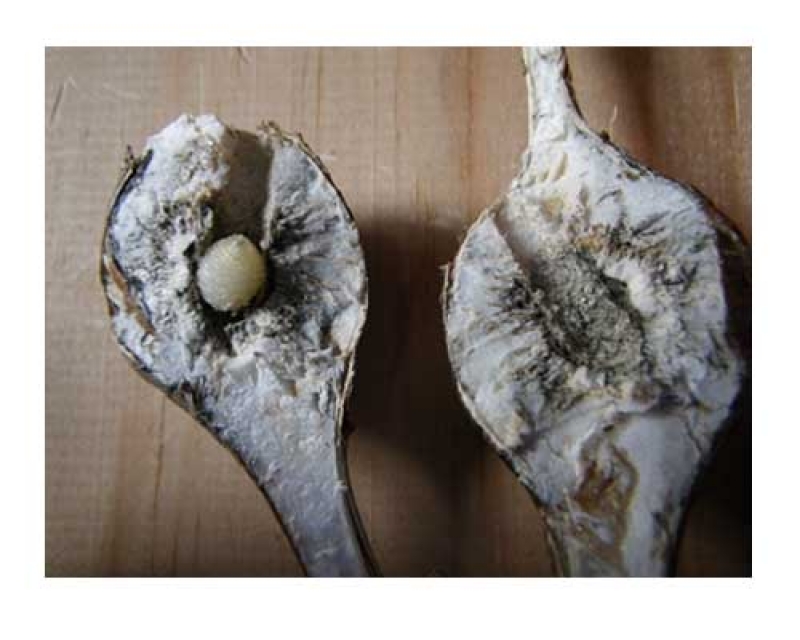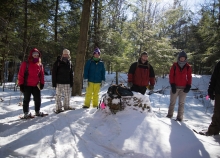
The Hunt for Winter Wildflowers
This winter Nature Up North is featuring a Winter Ecology Series, in which St. Lawrence University students in Dr. Karl McKnight's Winter Ecology course share their observations from a weekly field trip to Glenmeal State Forest in Pierrepont. We hope you enjoy their accounts from days spent in the woods examining the fascinating ways plants and animals endure the North Country winter.
By Kevin Tyler
3/06/2014
This week during lab class, our group went forth to search for, discover, identify and learn about winter wildflowers. To the untrained eye (mine), these “wildflowers” look a lot like dead twigs poking through the snow cover. However, upon closure inspection, it becomes apparent that these twigs are not dead. Like us, they are doing what they must to survive the unfavorable conditions of a North Country winter. By examining these flowers and the characteristics which allow them to survive the conditions present during our winters, I am now able to recognize a new type of beauty.
We began our weekly trek with a brief outdoor lecture on the Centauria maculosa, or the Spotted Knapweed. This invasive pioneer species could be found quite frequently in the ditches the separate Glenmeal State Forest from Route 24. This wildflower, while not particularly attractive, consisting of little more than a dry, brown, woody stem and a pale brown and slightly fuzzy fruit, contained something which I found to be quite amazing. Within the fruit pod of several Spotted Knapweed lived a tiny insect larvae, waiting patiently for the change of season.

The Spotted Knapweed made a great segue into what I considered to be the highlight of the day, Gall-makers. These creatures have the uncanny ability to parasitize and manipulate a plant’s DNA, creating a comfortable microhabitat to survive the winter season. Dr. McKnight delivered to the class a wonderful rendition of the process of gall-making, which included but was not limited to substantial enzymatic slobbering and the construction of a fine hotel.

Our group spent the afternoon snowshoeing to the swamp where we began our Ecological Biathlon, collecting as many species of winter wildflowers as we could find. When we finished with our collection, we retreated to the warmth of the Winter Ecology lab on St. Lawrence University’s campus to have lunch and identify these flowers and any of their inhabitants. We were able to identify thirteen different species, which earlier in the day I may have walked right past, assuming them to be nothing more than twigs piercing the snow. We were also able to collect samples of three types of gall-maker and the Knapweed dwelling fly larvae. Ultimately, this week’s lab has given me the knowledge of perception that winter is not a dead season, so much that it is a sleepy season. These creatures, both plant and animal, will awaken in the spring to present us with a beautiful and diverse Northern Forest.

